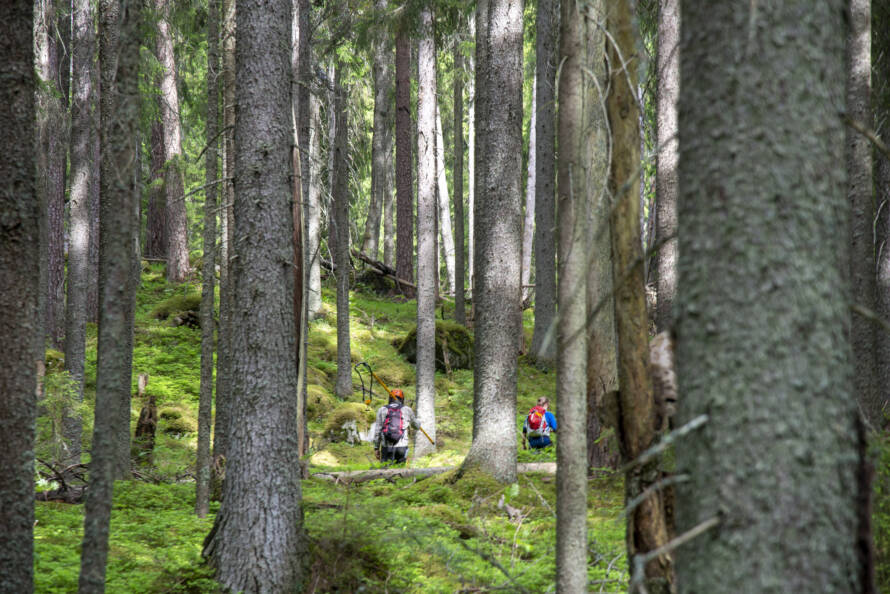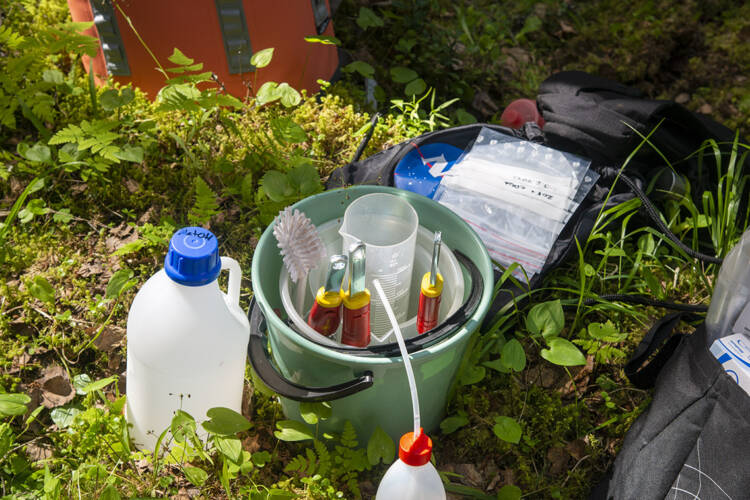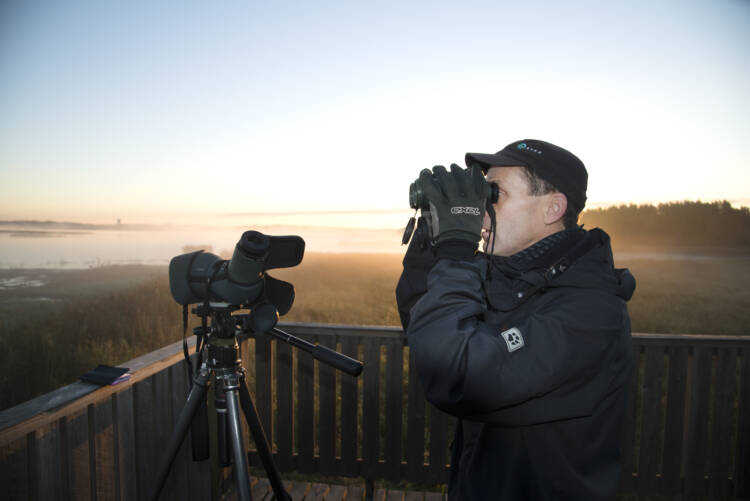Field observations
In the field, observations are made and samples are collected for future analyses, or technology is utilized for remote monitoring. The collaboration between professionals and volunteers is crucial in collecting extensive and diverse data.

The important role of field observations in nature monitoring and surveys
Often nature monitoring and surveys are based on field observations. Although some of the monitoring doesn’t necessarily rest upon field observations, but rather on remote mapping or weather radar observations, observations collected in the field are often needed as reference material or for quality assurance. For example, in habitat type monitoring, observations can be collected both through field work and through remote sensing, but data collection is most effective when both methods can be combined. Also, for example, monitoring birds or mammals using satellite locators require the devices to be attached during field work. In general, it can be stated that all nature monitoring and mapping require field observations at least as a supporting method.
Examples of field observations and collecting samples in the field
In the field, observations are either made and recorded directly for analysis later, or samples are collected to be defined later in a laboratory or under a microscope. Examples of the latter are various monitoring schemes of water conditions, where samples collected in the field are analyzed in a laboratory. Also in eDNA and other molecular biological monitoring methods, samples are collected in the field and analyzed in the laboratory. For many groups of organisms, a more precise identification of the species requires microscopic examination of the samples, and the samples can also be stored in collections. Data collected in the field can also be different image or sound recordings, which can be collected either manually or using different automation methods.

Cooperation between professionals and volunteers in making field observations
Field observations are collected in surveys through many different methods. Some of the monitoring and mapping based on field observations is based entirely on samples taken by professionals. For example, many of the marine and inland water monitoring activities are carried out entirely by professionals. In terrestrial ecosystems, both professionals and volunteers participate in the surveys. Especially in species monitoring, volunteering species enthusiasts do a large part of the monitoring based on field observation, and every year thousands of enthusiasts participate in the implementation of the surveys. In several monitoring activities, such as the monitoring of nesting birds coordinated by Luomus, the volunteering participants are of a professional level. In some surveys, the collection of observations has been distributed to a large number of volunteers through citizen science.
